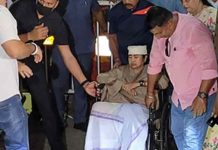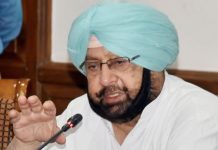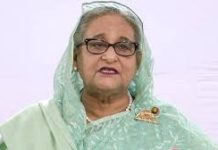The upcoming Karnataka poll is expected to be a close contest between the ruling BJP and Congress. However there is a buzz gaining ground about JD-S possibly playing a kingmaker role
As soon as the Election Commission announced its notification of assembly elections in Karnataka, there was a rush of opinion polls predicting either an outright Congress win, or a hung assembly. As this journalist toured through the Karnataka state for the past 10 days, there were animated discussions in Karnataka that the Janata Dal (Secular) of Gowda family would be the ’kingmaker’.
Politically aware people observed that not one poll suggested that the incumbent Bharatiya Janata Party (BJP) would improve its performance. Instead, there was a buzz about the Janata Dal (Secular) emerging as a “kingmaker’.
The Karnataka Assembly Elections 2023 are scheduled to be held on May 10 while the counting of votes will take place on May 13. The election will be held to elect the 224-member Assembly. This time it is expected that there will be a close contest between the ruling Bharatiya Janata Party (BJP) and Congress along with the Janata Dal-Secular (JD-S) playing a possible kingmaker role.
There are 224 Assembly constituencies of which 36 are reserved for the SCs and 15 for the STs. The total number of electorates in the state is 5,21,73,579, of which 2.62 crore are males and 2.59 crore are female. The total number of 80 plus electors is 12.15 lakh. It is an increase of 32 per cent from 2018. It also includes 16,976 proud electors who are 100 plus. The number of persons with disabilities (PWDs) has increased to 5.55 lakh. This is an increase of close to 150 percent. First, the vote-from-home option will also be available during election, which will be applicable for people aged 80 and above.
Opinion poll projections
The ABP-C Voter Karnataka Opinion Poll has projected 115-127 seats for the Congress, 68-80 seats for the BJP, and 23-35 seats for the JD(S). The Congress and the BJP are projected to get 44% and 37% of the votes in the Hyderabad-Karnataka region. In terms of seats, the Congress is likely to trump the BJP, winning 19-23 seats. The BJP could win 8-12 constituencies in the region. In the 50-seat Mumbai-Karnataka region, which shares a border with Maharashtra the BJP and the Congress are projected to garner 43% of the vote share each. However, the Congress is projected to win 25-29 seats, whereas the BJP has been predicted to win 21-25 seats. This is a Lingayat-majority area.
The BJP is likely to rake in 46% of the votes in Coastal Karnataka, while the Congress is projected to get the support of 41% voters. JD(S) is unlikely to get more than 6% of the total vote share. This is the smallest region in Karnataka, with just 21 seats. In terms of seats, BJP is likely to be locked in a neck-and-neck battle with Congress, with a 9-13 seat projection for the saffron party. The latter is likely to have between 8 and 12 seats. However, the BJP is projected to get 38% of the votes in Central Karnataka, which is considered to be a bastion of the saffron party. The Congress is likely to rake in 41% of the votes. In terms of seats, the BJP is projected to win 12-16 seats in the 35-seat region, while the Congress is likely to get 18-22 seats. JD(S) is unlikely to get more than 2 seats in this region.
Former CM HD Kumaraswamy is confident of winning the Karnataka polls this year. “Kannadigas have decided to elect a regional party. This time they will reject both national parties, says JD(S) leader HD Kumaraswamy,” he said. The survey projected a 20% vote share for BJP and 36% for Congress in the 55-seat Old Mysore region. Translated to seats, the survey projected 26-27 seats for the JD(S) and 24-28 seats for Congress. The BJP ranked a distant third with a seat projection of only 1-5.
2018 results
‘In the 2018 elections, the BJP had won 104 seats, the Congress 80, the JD(S) 37, and others 3. The Congress had got more votes (38.14 per cent of the total, a rise of 1 per cent from 2013) compared to the BJP’s 36.35 per cent and the JD(S)’s 18.3 per cent. While the Congress and JD(S) had come together to form the government following the results, the BJP had weaned away 17 MLAs and replaced the coalition in power a year later.
What the BJP is taking heart from are the 2019 Lok Sabha polls, when the Modi factor powered the party to 25 of the 28 seats in the state.
In this poll, Siddaramaiah topped the list of voters’ choice for the next CM, with 39.1% voting in his favour. A majority of voters also felt that Congress would win the elections this year. 50% of respondents in the ABP C-Voter Survey said that the BJP government performed poorly. As much as 47% of the respondents, said that CM Basavaraj Bommai was poor.
The saving grace for BJP was perhaps PM Narendra Modi’s ratings. As many as 47% of the respondents rated PM Modi’s performance as ‘Good’.
Lingayats factor
However, a consolidation of caste groups could be the decisive factor. The Lingayats, who make up nearly 17 per cent of the population and are spread around northern districts, have been seen as BJP supporters since the 1990s. The Vokkaligas, at 15 per cent and mainly in the south of the state, have traditionally backed the JD(S). The backward castes, who make up 33 per cent of the population; sections of Dalits, who constitute 15 per cent; and the religious minorities, who make up 12 per cent, are considered to be Congress vote blocks, though there are several divisions among them.
The BJP’s best chance lies in attracting castes besides the dominant Lingayats, with this acting as a force multiplier to its narrative of development and welfare measures (particularly those launched by the Narendra Modi government). However, it is nervous about the Lingayat vote, having relegated the community’s stalwart leader B S Yediyurappa to a secondary role. Apart from a consolidation of its existing caste base, the Congress is counting on a slip in the BJP votes due to anti-incumbency and decline of the JD(S) due to infighting.
The Congress, which has a good organisation plus several strong leaders in Karnataka, is hopeful of ending its poll drought in big states with the May 13 result. It is also counting on the corruption allegations against the BJP, with senior leaders admitting that the manner in which the government came into existence lay at the root of it. However, fresh off from its Northeast electoral win, the BJP is looking at a tough contest in Karnataka on May 10. Karnataka, the only state in south India where the BJP has a government, has never voted an incumbent back to power in 40 years. In both its two terms in government (2008-13 and 2019 to now), the BJP did not win a clear majority in Karnataka, but is hoping that the Narendra Modi factor will erase the anti-incumbency against it, and see it past the half-way mark of 113 in the 224-member Assembly.













